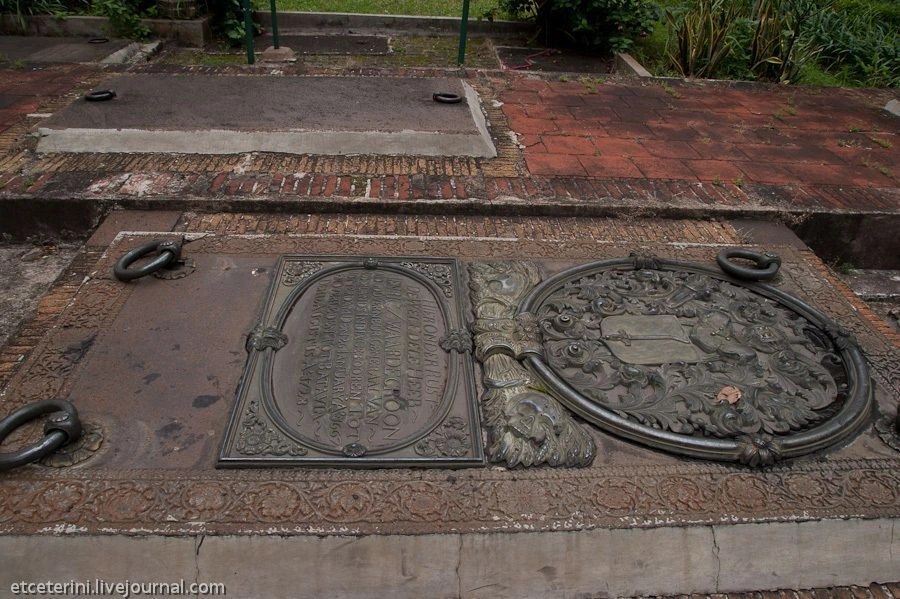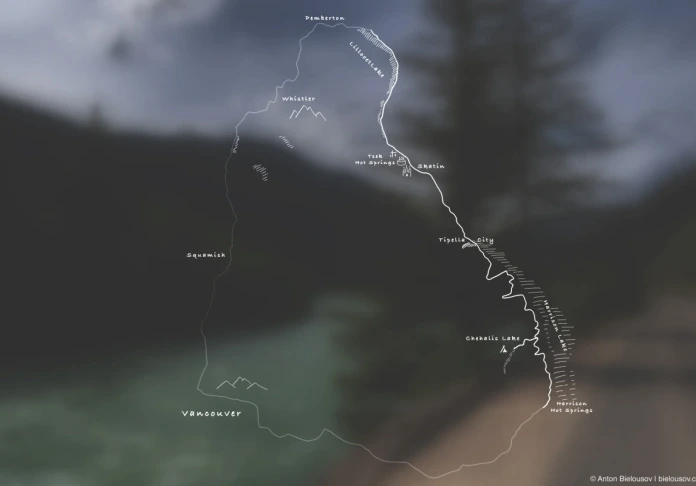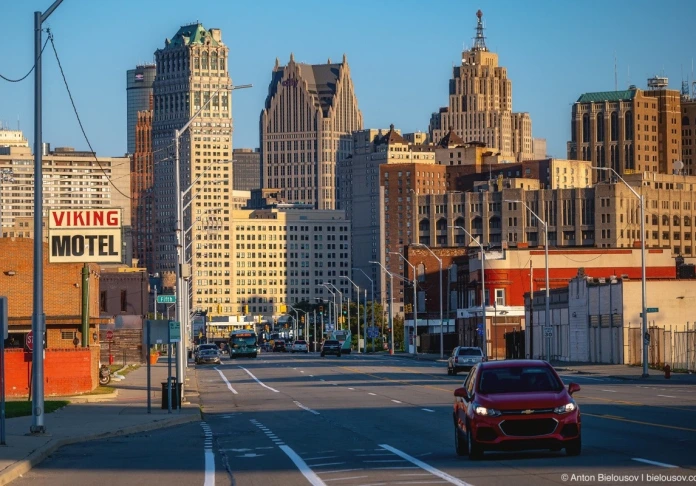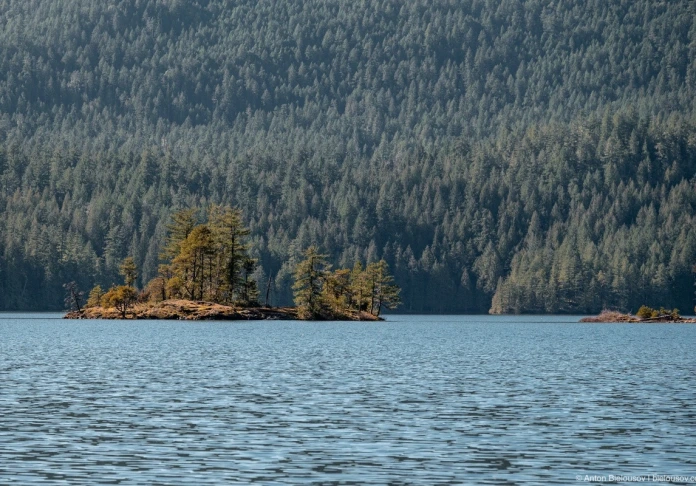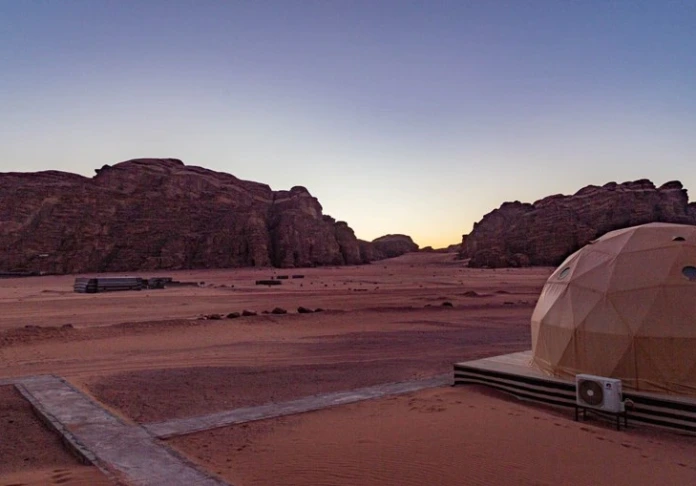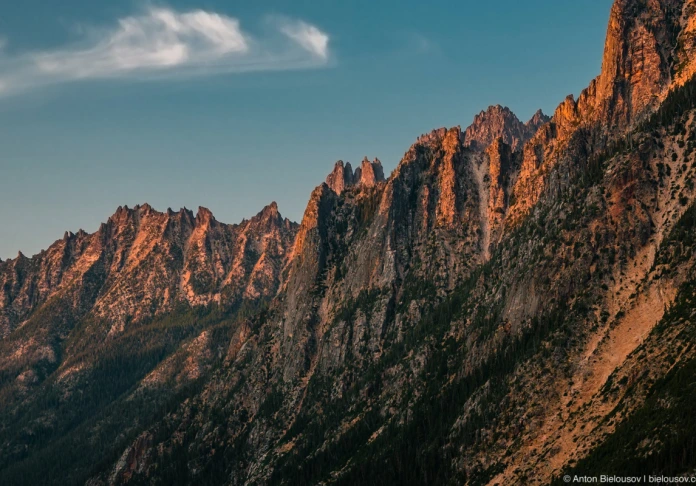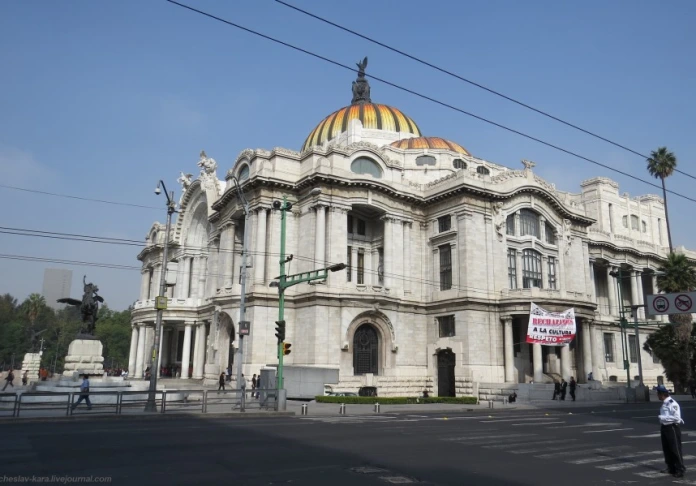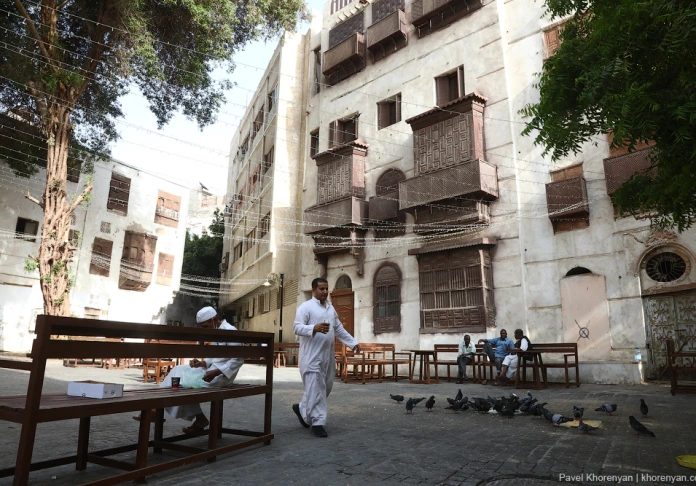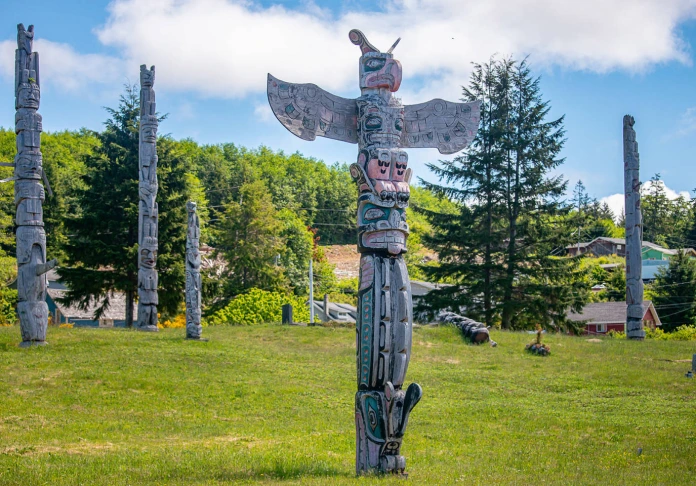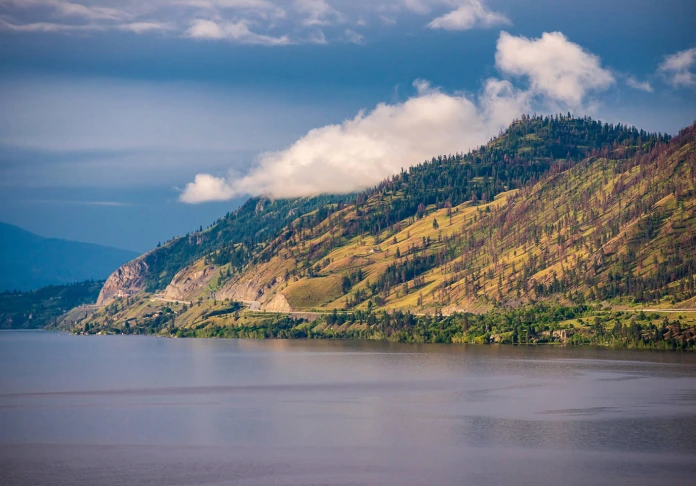Jakarta, Kota
Huge and dirty city, crowded and chaotic built up, crowded with people and cars and unrepresentative for the traveler other interest than transit somewhere deep into Southeast Asia. The impression created on the Jakarta after reading guidebooks and stories on the forums travelers. But we, urbanists, loving bustling metropolis, such stories are not scared, are not you?
Well-preserved historic districts, the forest of modern skyscrapers, comfort and organized public transport system, tolerant and unobtrusive people - is also in Jakarta.
So, what you see depends largely on your attitude and curiosity. This city is ready to offer you all that is in Indonesia. History and modernity. Wealth and poverty. The splendor and squalor. And life, and tears, and love. In Indonesian.
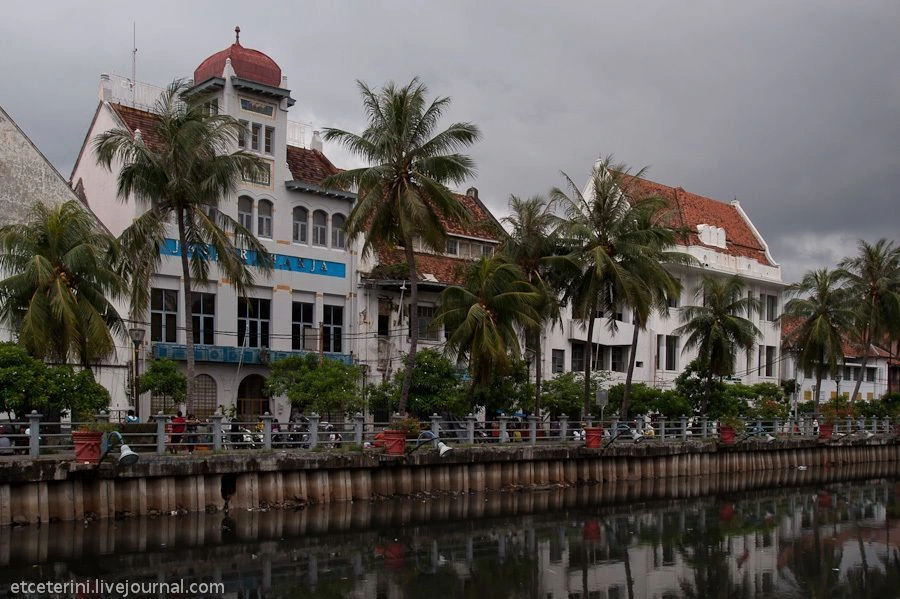
Let's begin to explore Kota Jakarta with historical Dutch Quarter - Cat. This area is located to the north of the modern city center, near the port. The route of our walk - on a map of the Lonely Planet. Today we visit the places marked on the map points 1-5.
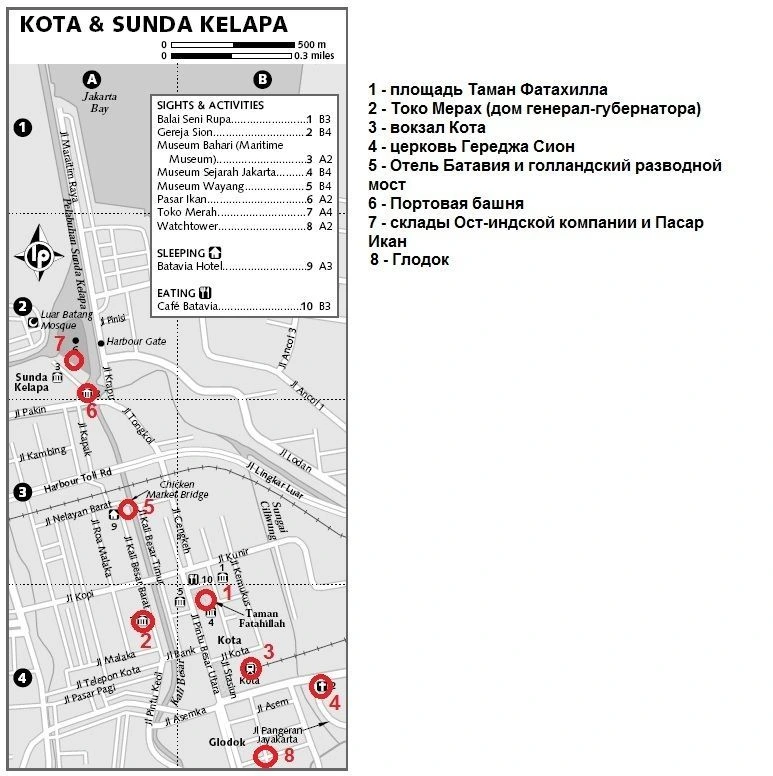
To enter into the context of a little historical information. When the first Europeans - Portuguese - in 1522 settled on the island of Java, there existed a kingdom in West Java, who ruled the Hindu dynasty Padzhadzharan, and the place was bustling Jakarta Sunda Kelapa port. After a few years, the Muslim ruler of Sunan Gunungdzhati knocked Sunda Kelapa from the Portuguese and renamed the city Dzhayyakartu ("City of Victory"). Then, in the city is the East India Company - a powerful Dutch trade and colonial empire, and in 1618 the fort East India Company captured Englishmen. British flag breezed to Dzhayyakartoy long - six months later, in May 1619 the Dutch, under the command of the brave Pitreszoon Ian Cohen knocked the British destroyed the city to the ground. At the site of the burnt Dzhayyakarty Cohen built a new city, walled and called it by the name of Batavia of the ancient tribes of the Dutch. Prosperous Batavia its majestic buildings and canals has earned the title of "Amsterdam in the tropics." The Dutch successfully ruled in Batavia until the Second World War. Well, a few changes the name of the city back in 1942 during the Japanese occupation. What was once Batavia - and a modern cat. The fortress wall and a large part of Dutch buildings were destroyed under the pressure of the modern city, but the central part of Batavia, as the fort East India Company, remained intact. The central area of Batavia is now called Taman Fatahilla. Dominant areas - the former town hall building. Here was located the Dutch Administration in Batavia, the court, and in the basement was a prison.
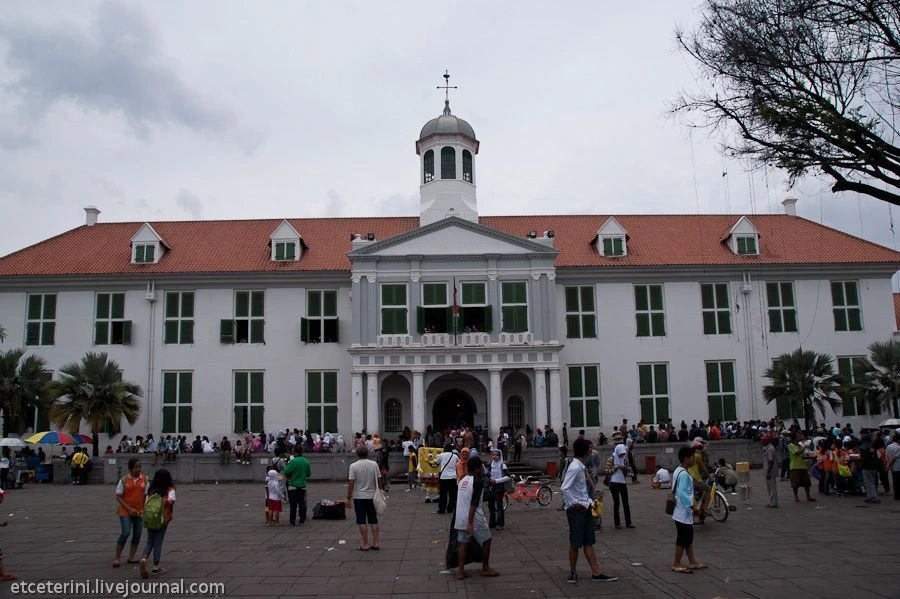

Now City Hall - Jakarta History Museum. In the courtyard of the town hall - the evidence of the former Dutch rule. This Portuguese cannon C Dzhagur was seized during the capture of Malacca in 1641.
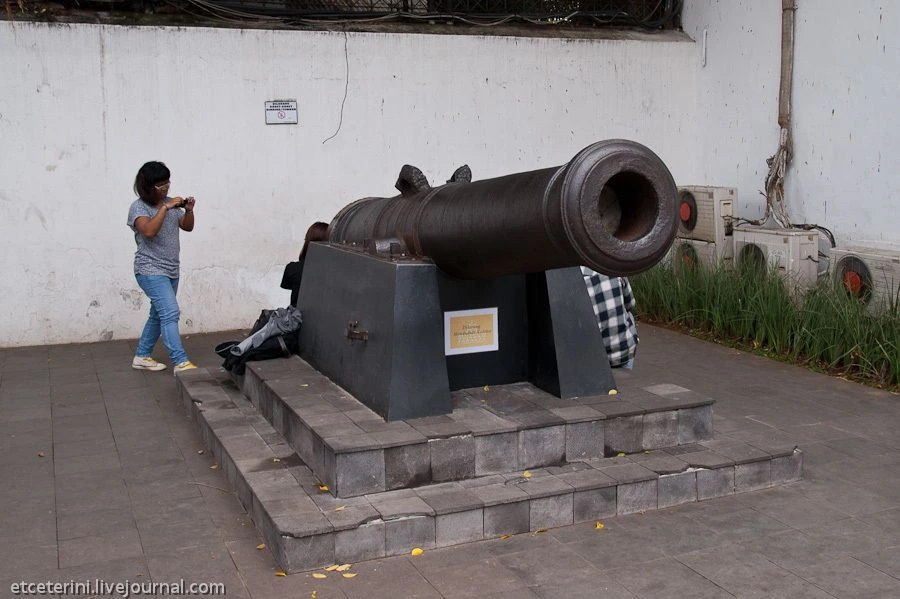
Those guys at the end of the gun - sex symbol in Indonesia, and childless women come here hoping to get rid of infertility.
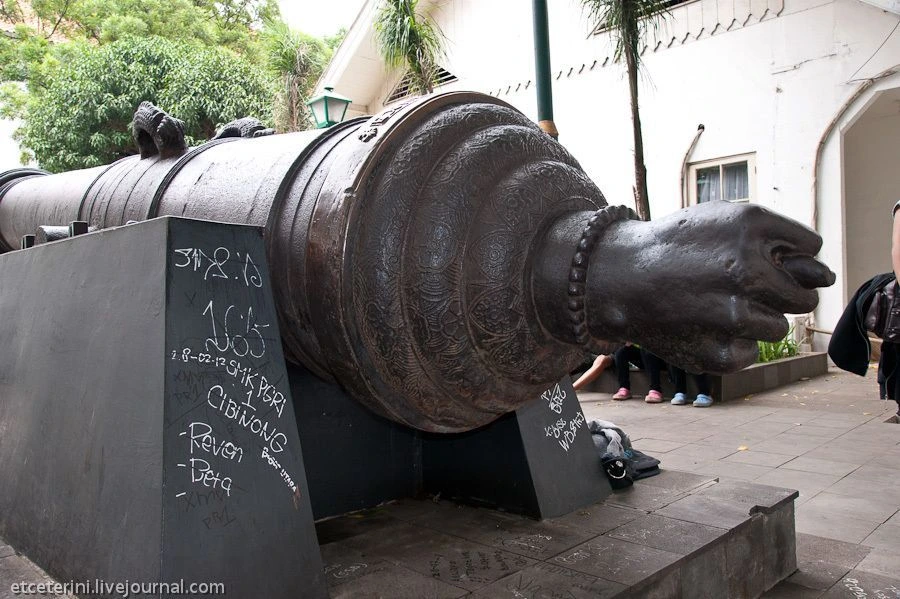
Old fountain in the courtyard of the town hall. Since «dierenbescherming» in Dutch means "animal", we can assume that this troughs for horses.
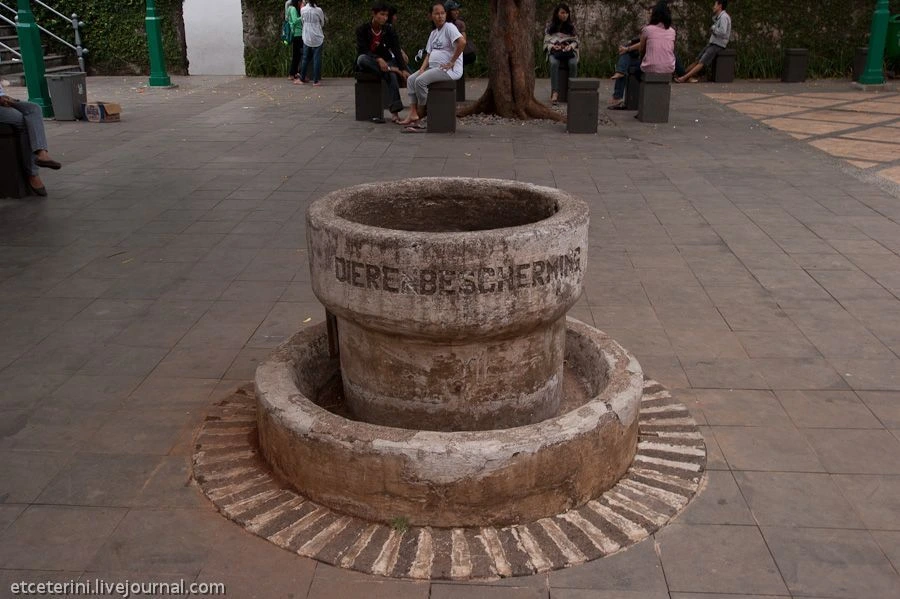
On the other side of the square - mail Indonesia. The building in the late colonial style, probably a couple of centuries younger than the town hall.
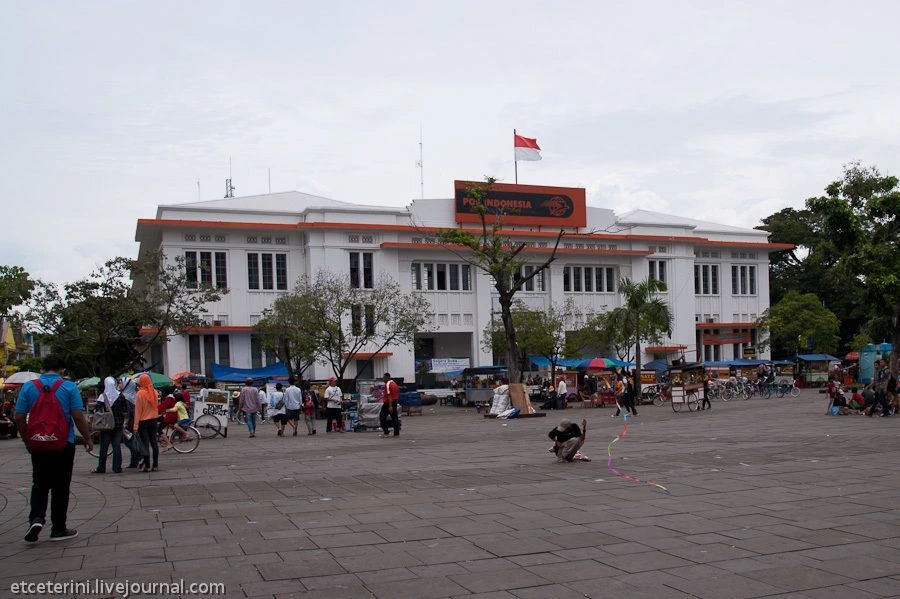
Another attraction of the area of Taman Fatahilla - Palace of Justice (Balai Seni Rupa). The architectural appearance of this palace, built in 1866-70 years., Combines features of classicism with the European colonial "tropical" style - note the Greek portico (gallery with columns at the entrance) and colonial tall windows with wooden shutters. Now the former sanctuary of Themis is a museum of fine arts.
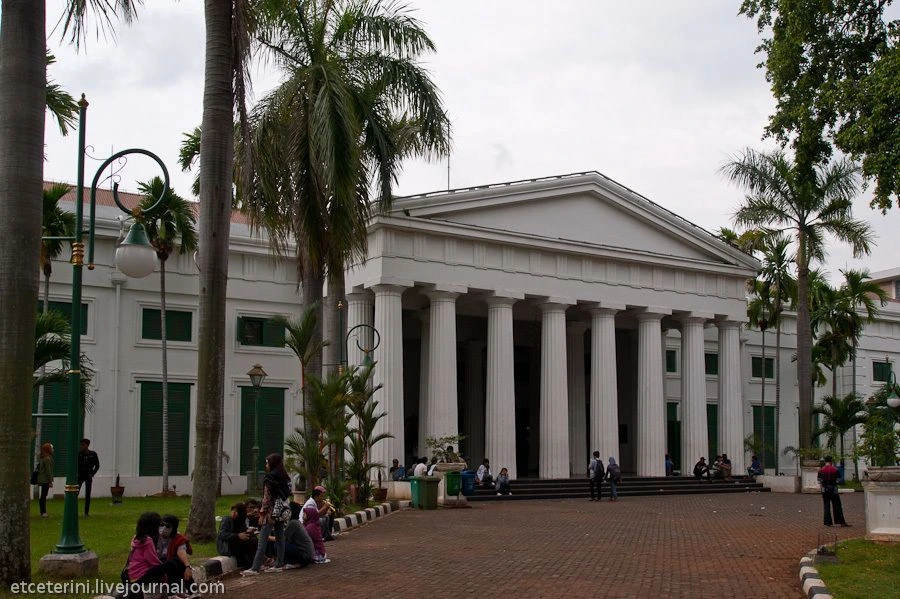
On weekends, the area Taman Fatahilla always filled - people come for a walk and have fun. Here you can meet and Jakarta residents and visitors from the Indonesian provinces. There are, of course, and Western tourists, but they are rare. Do not be surprised if the Indonesians asked to take a picture with you or just to chat a bit to practice their English. In general, the central area of Cats - a good place to observe local customs. The view from the windows of the town hall in the area of Taman Fatahilla. A crowd gathered to see the performances of amateur actors.
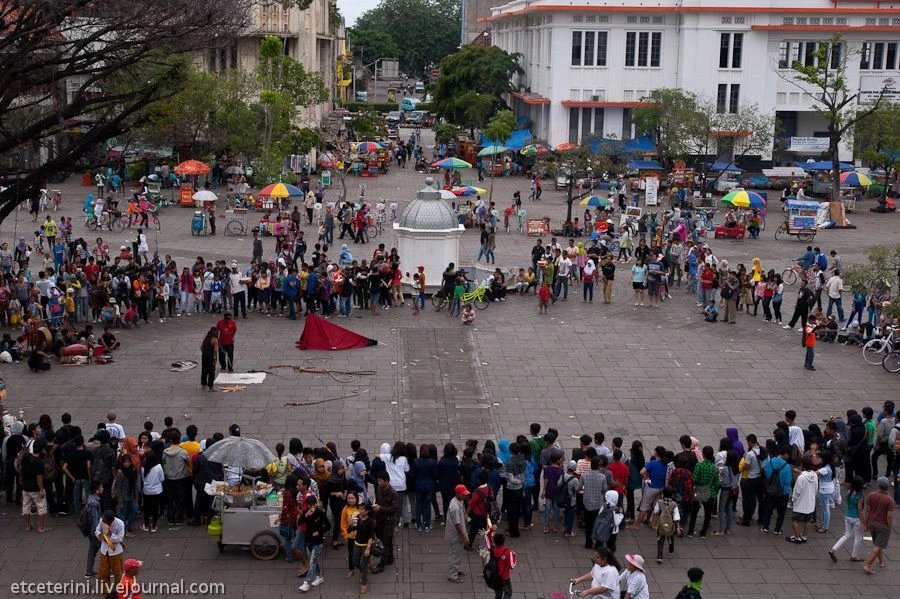
This guy maketh all sorts of tricks with a whip ...
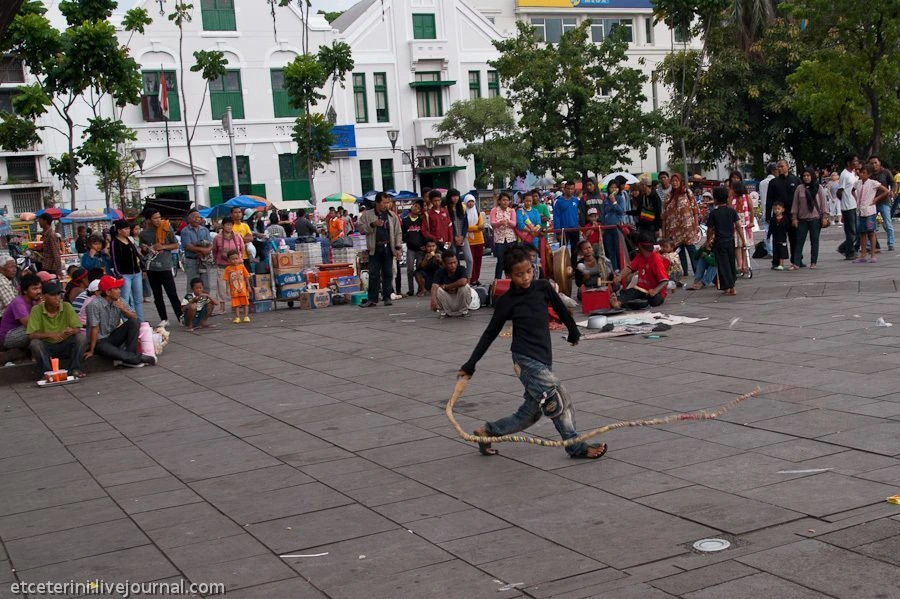
... To the accompaniment of traditional drums.
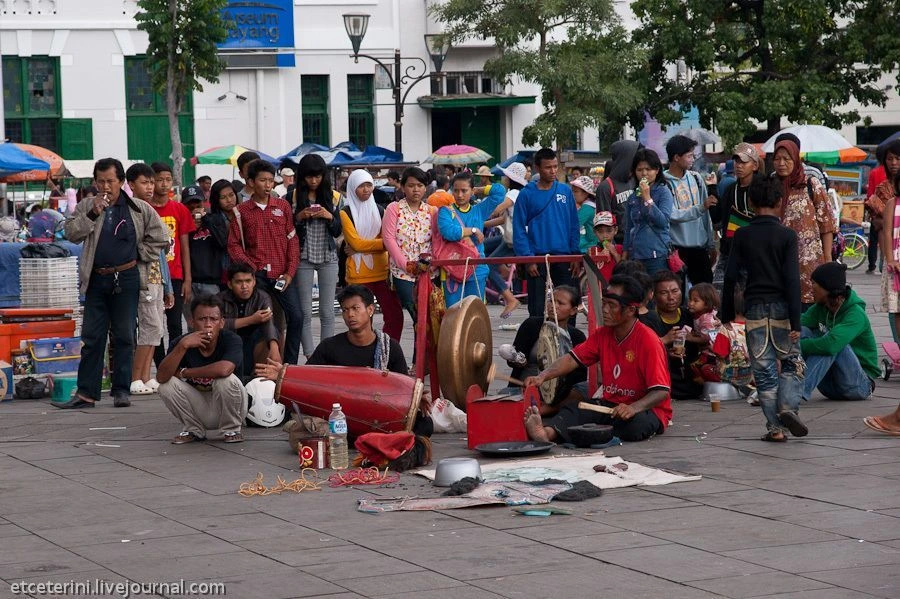
People - at least interesting sight Cats than architectural monuments. People watching. Students from the provinces.
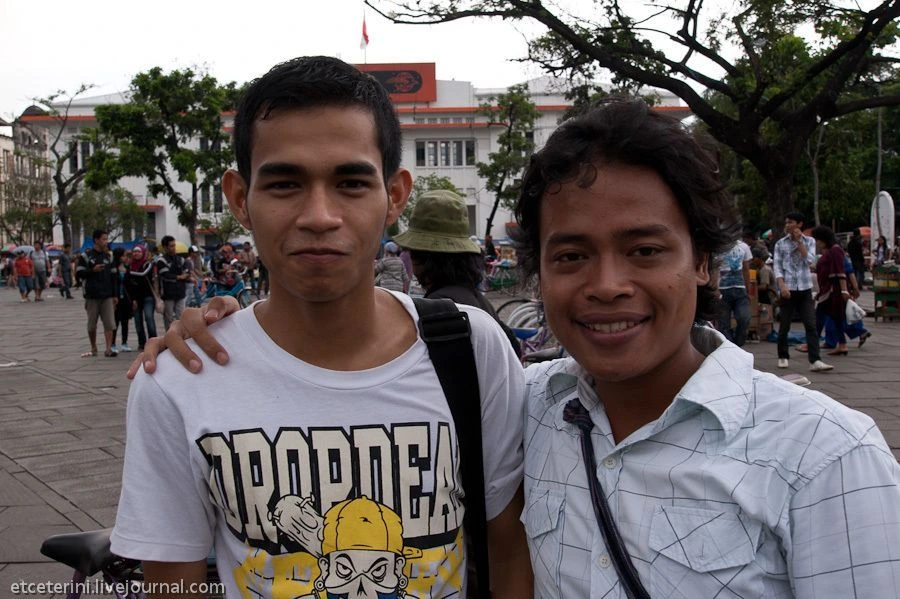
Children are always happy to pose.
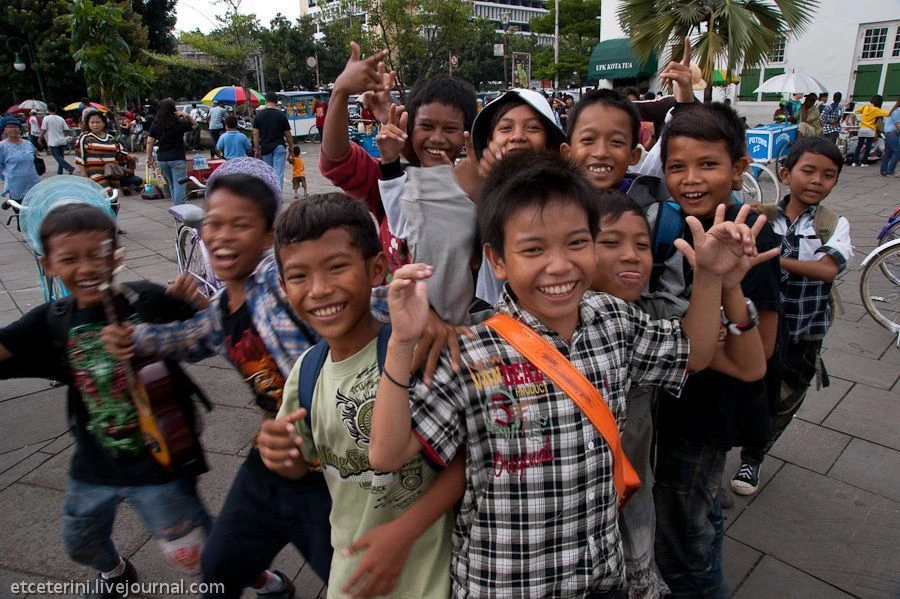
Horse velotandemah - one of the "chips" Taman Fatahilla

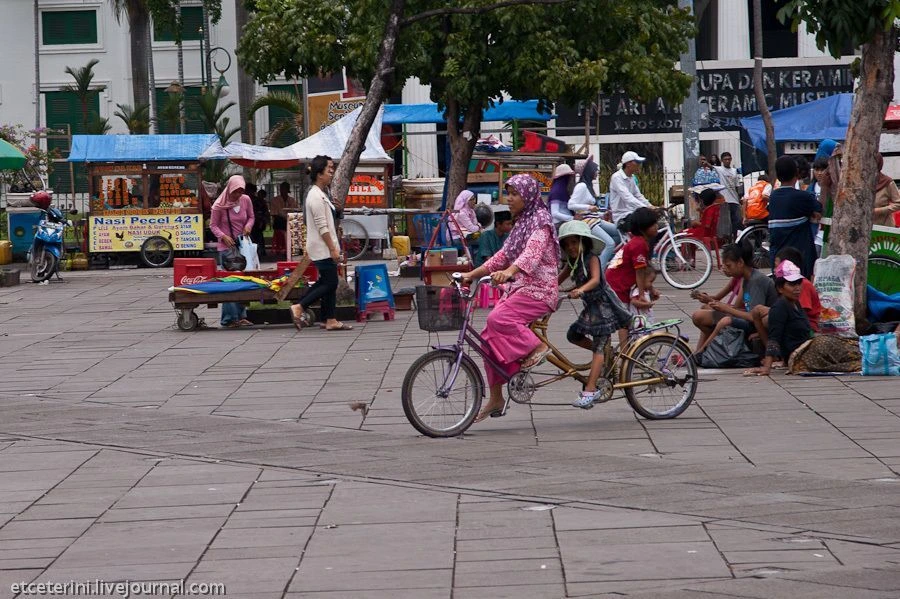
Indonezyskie teenagers
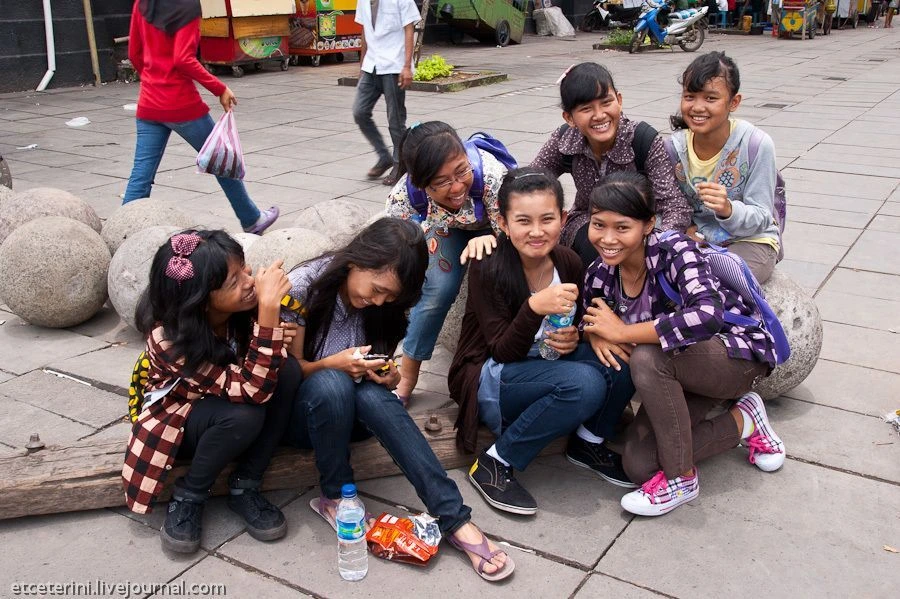
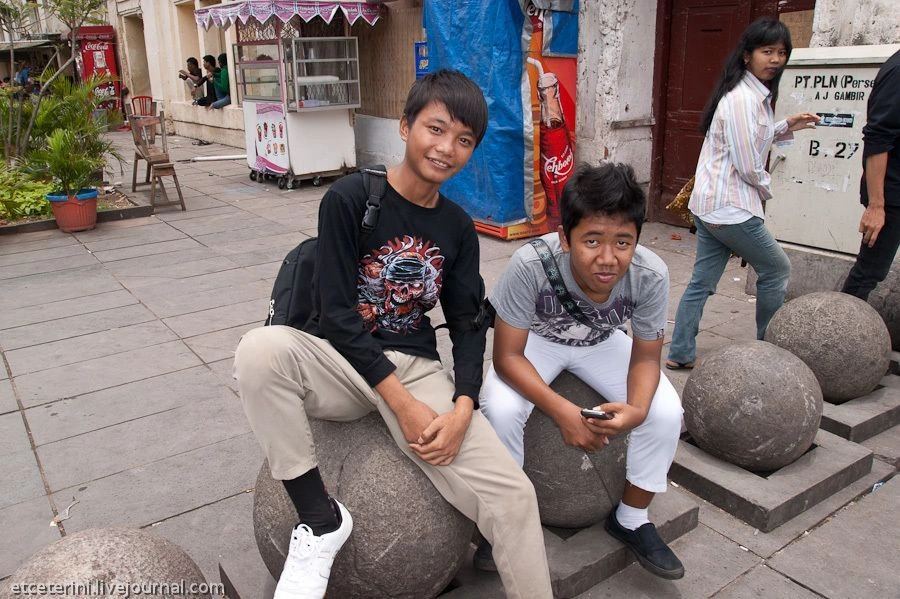
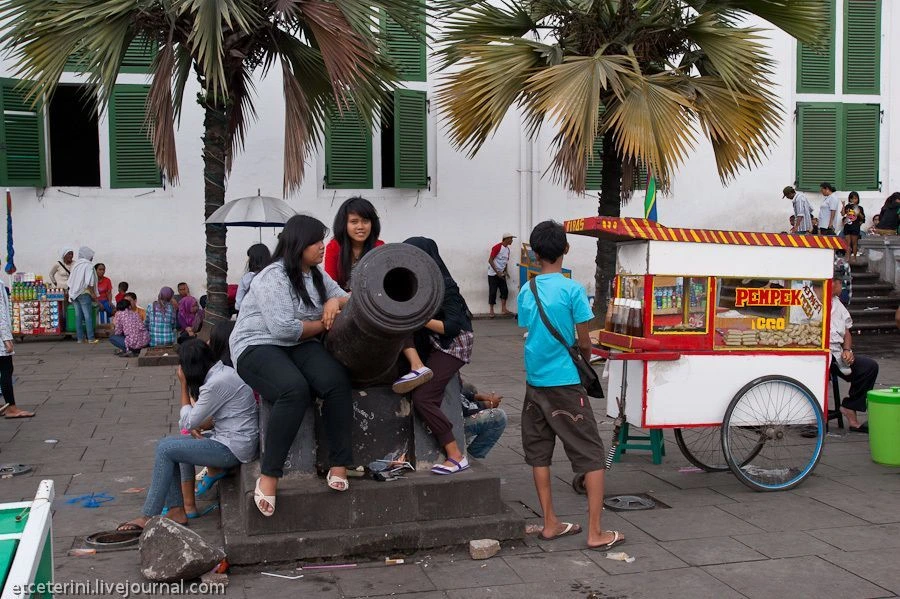
Entertainment for the kids - karuselkah capacity of 1 velosilu

Museum on the area of Taman Vayyang Fatahilla
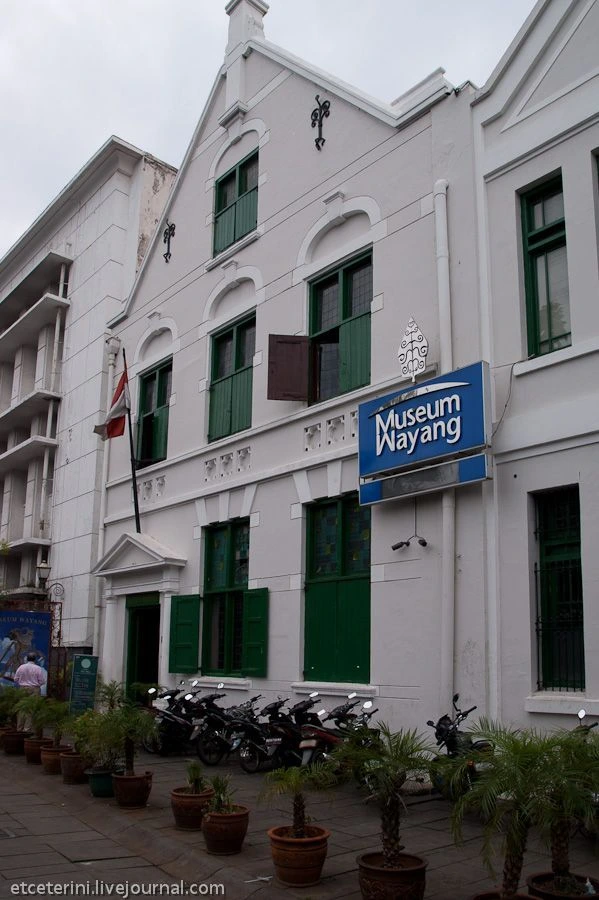
The museum - an extensive collection of vayyang - traditional puppets
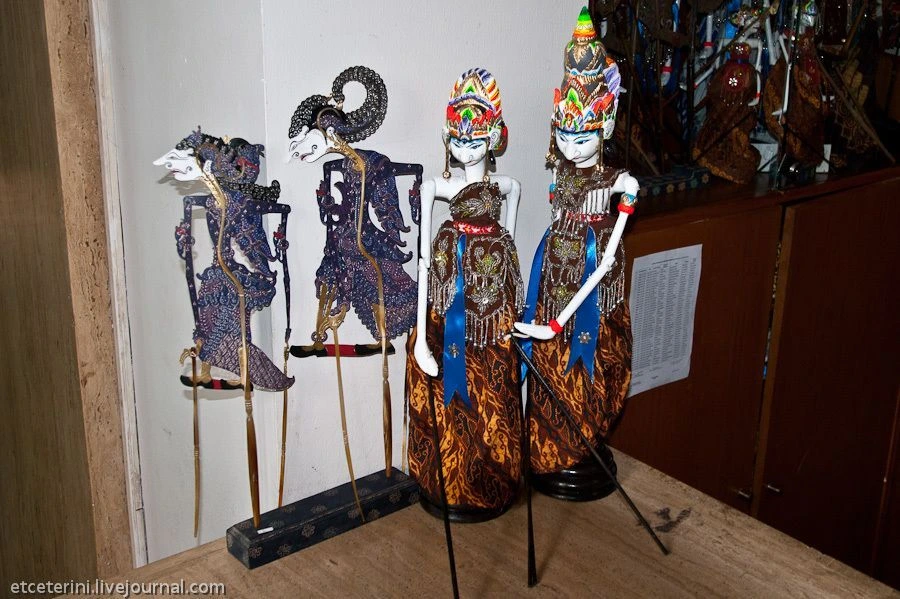
In addition to the museum of puppets and dolls have a larger - for example, that's so cute demons
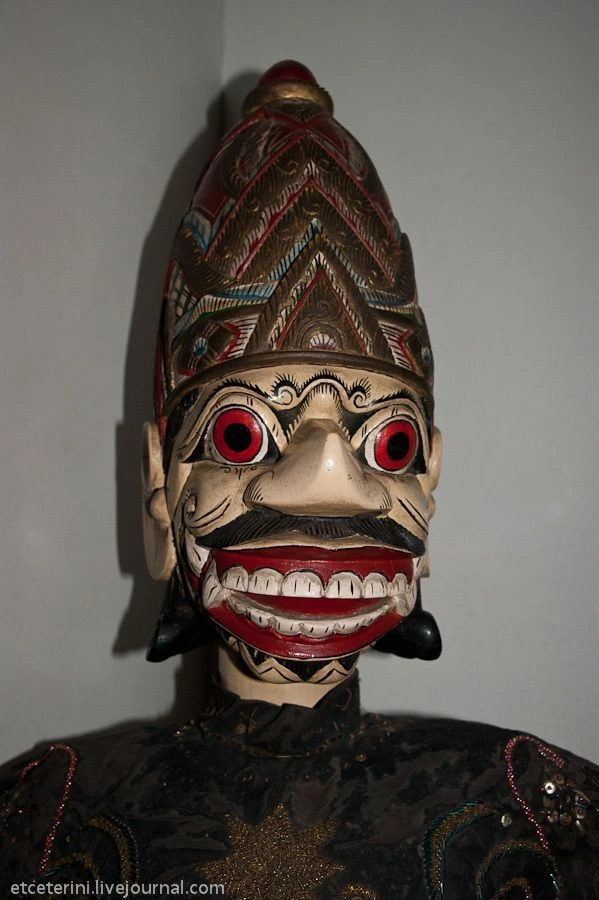
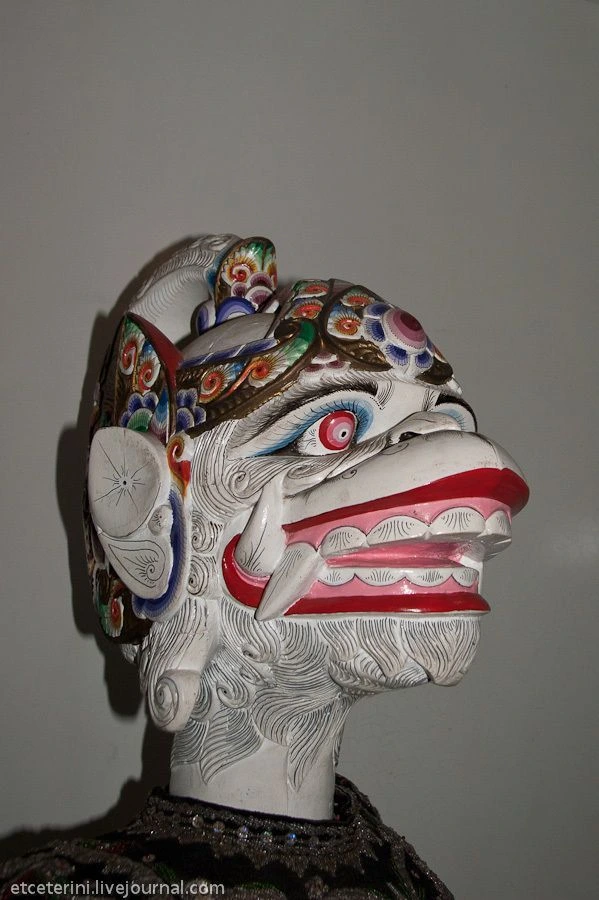
In the courtyard of the museum - the graves and memorials of governors-general of Batavia. Here memoral the city's founder and first Governor-General of militant Pitreszoona Ian Cohen, who died in 1629 of cholera during the siege of Mataram in Central Java
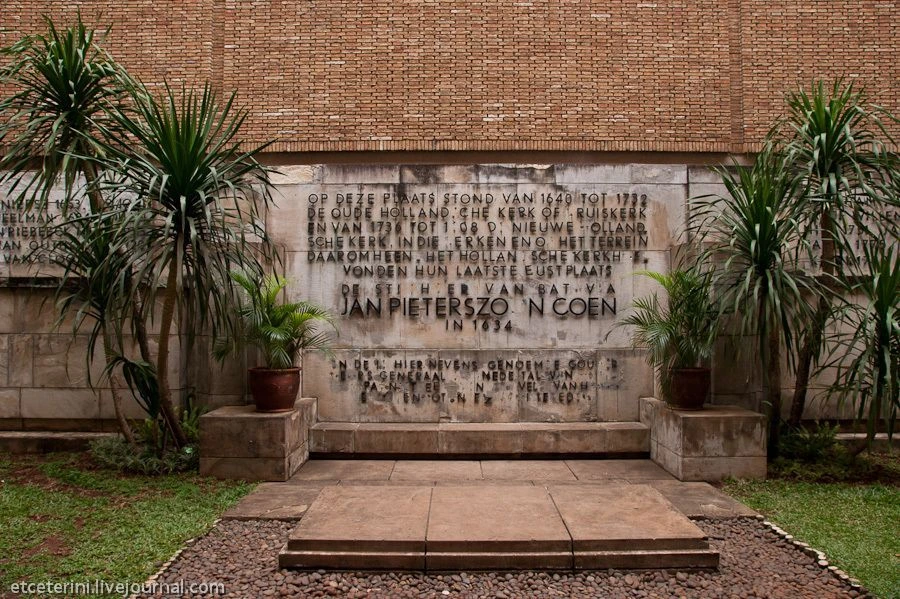
Tombstones notable inhabitants of Batavia
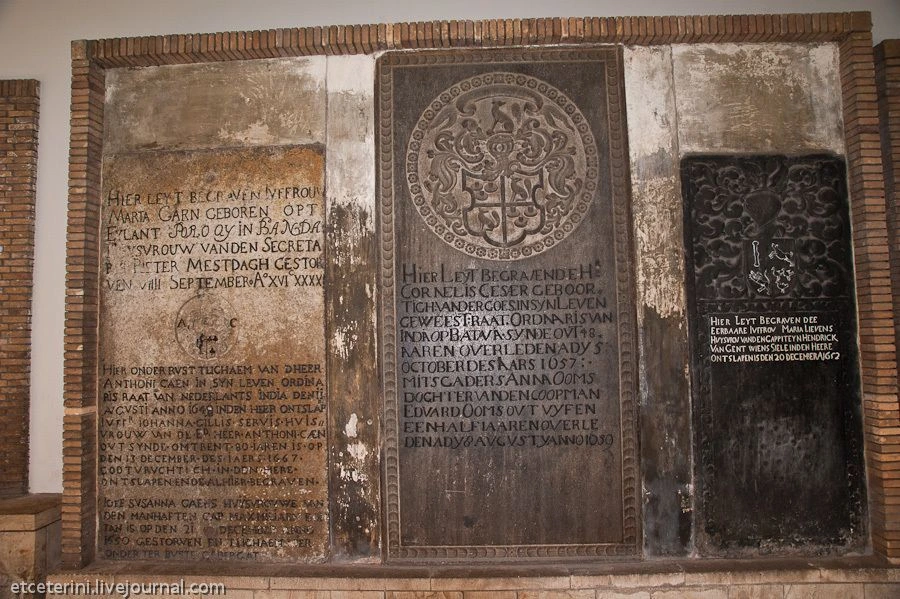
What a complete familiarity with Taman Fatahilla restaurant Batavia, exterior and interior which has changed little since ancient times.

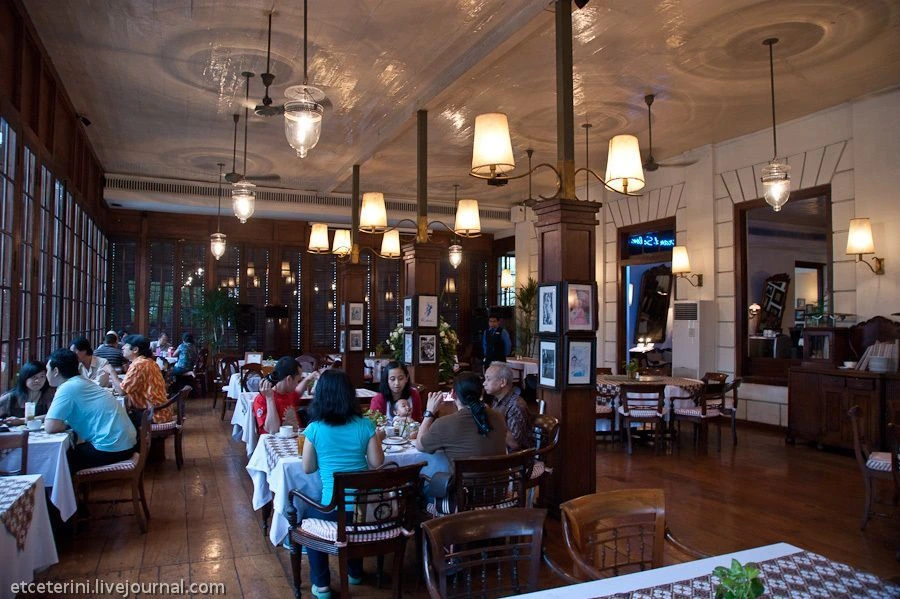
The streets around the spirit of colonial times also still felt.
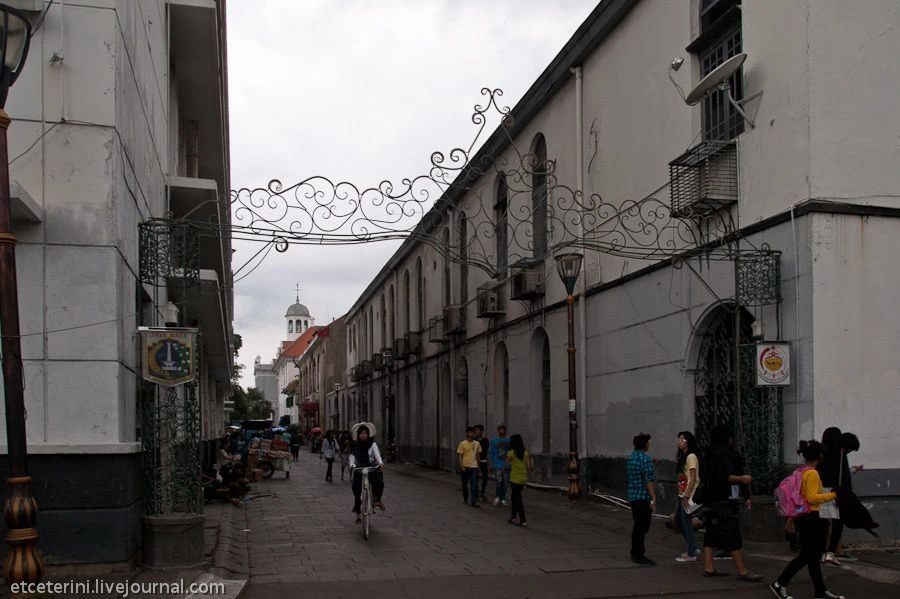
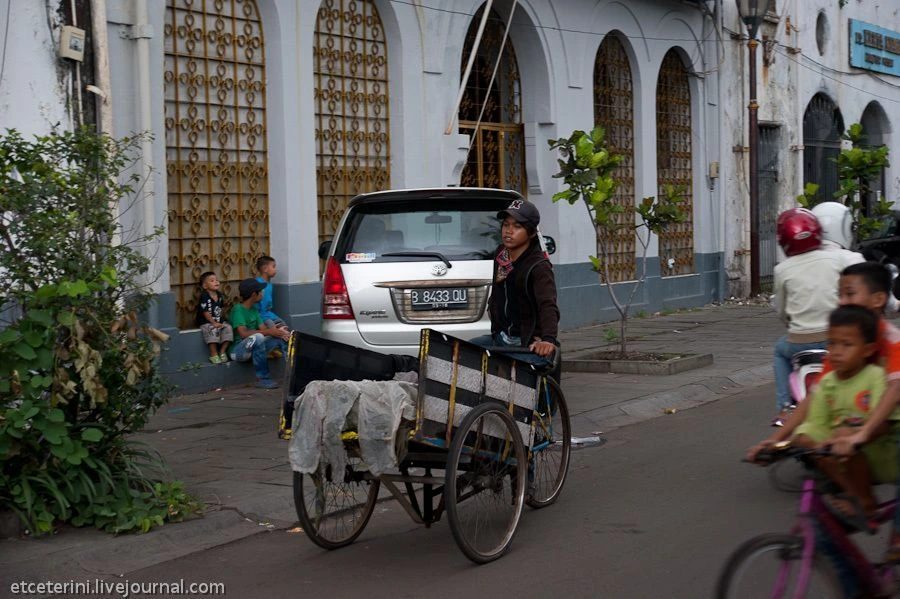
Although, some historic buildings waiting probably unenviable fate.
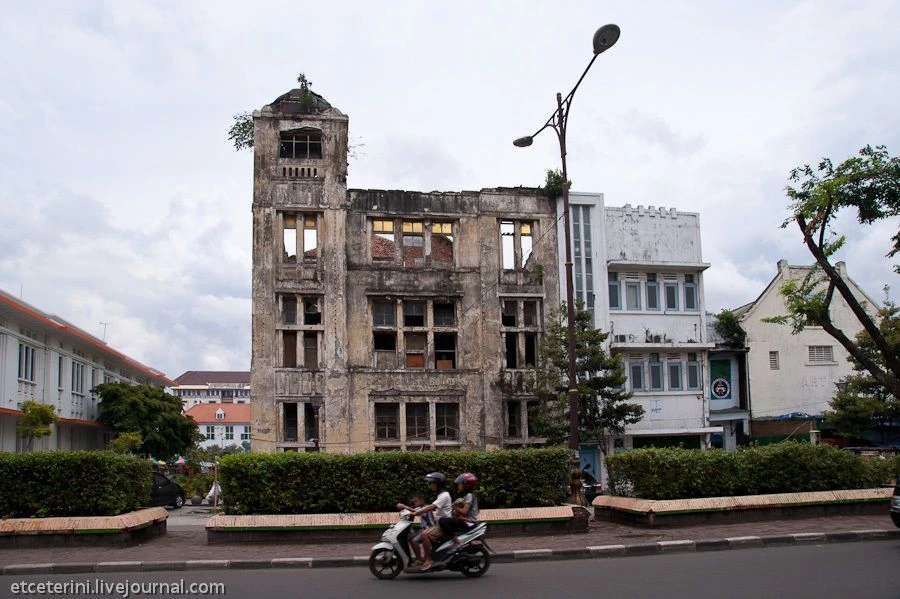
The Dutch built the capital of the colony in the image of the center of the metropolis and dug in Batavia channels connecting the city with the Bay of Jakarta. Distant, albeit obvious resemblance to the canals of Amsterdam, apparently brightened their homesickness. The center channel Batavia - Kali Besar)
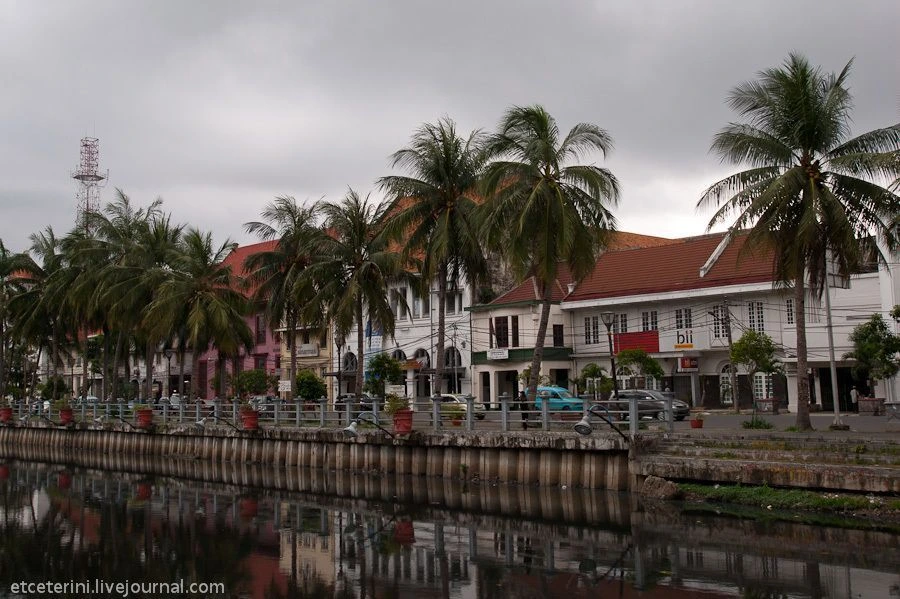
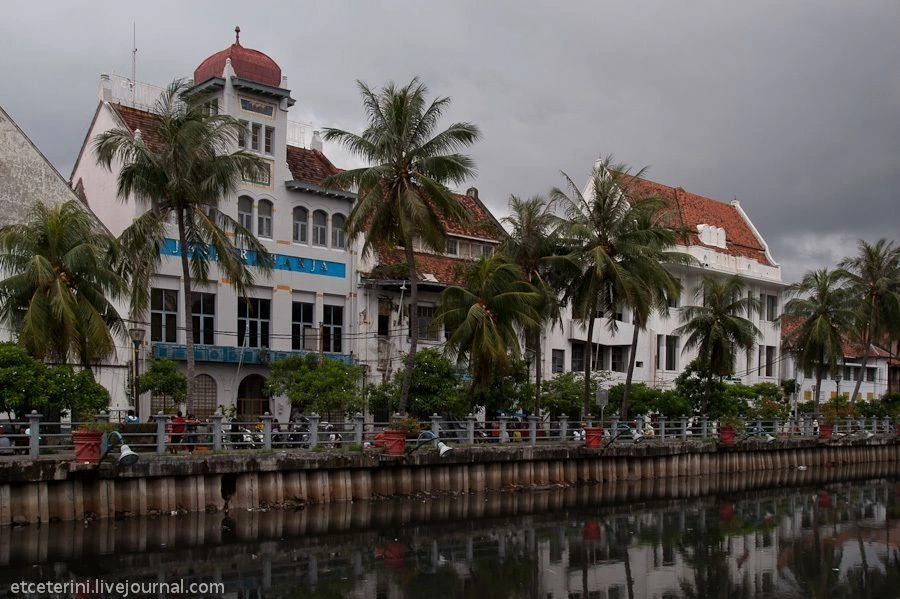
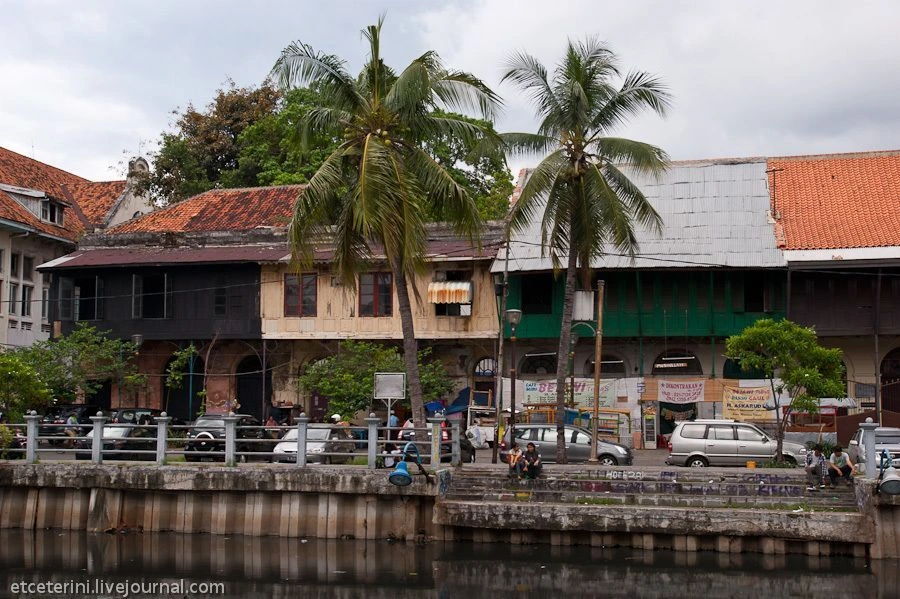
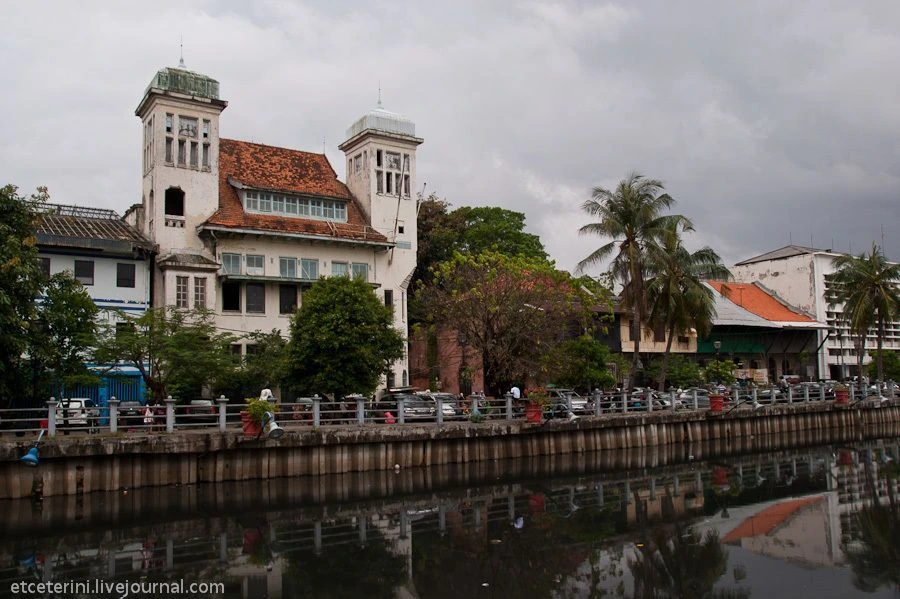
Pink house on the canal - the former residence of the Governor-General van Imhoff built in 1730.
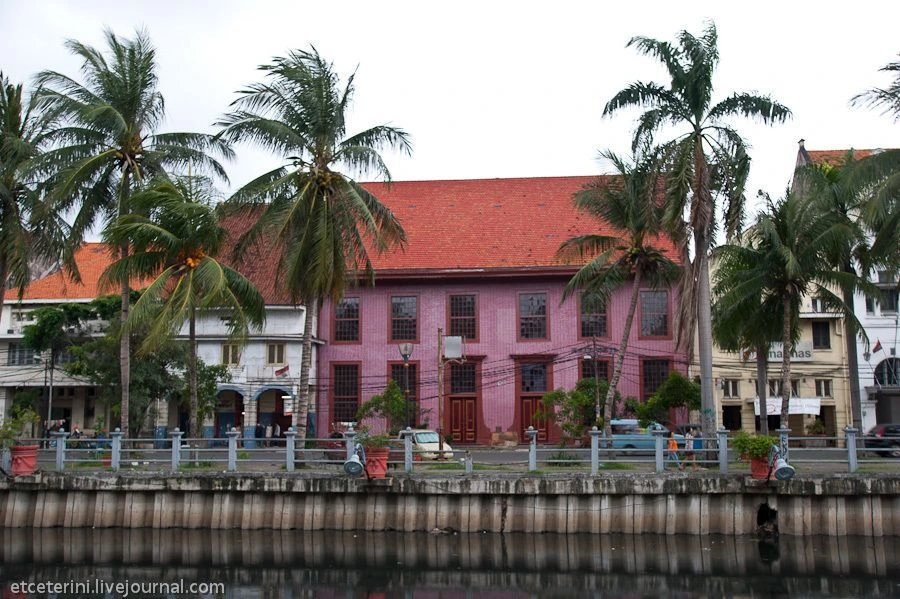
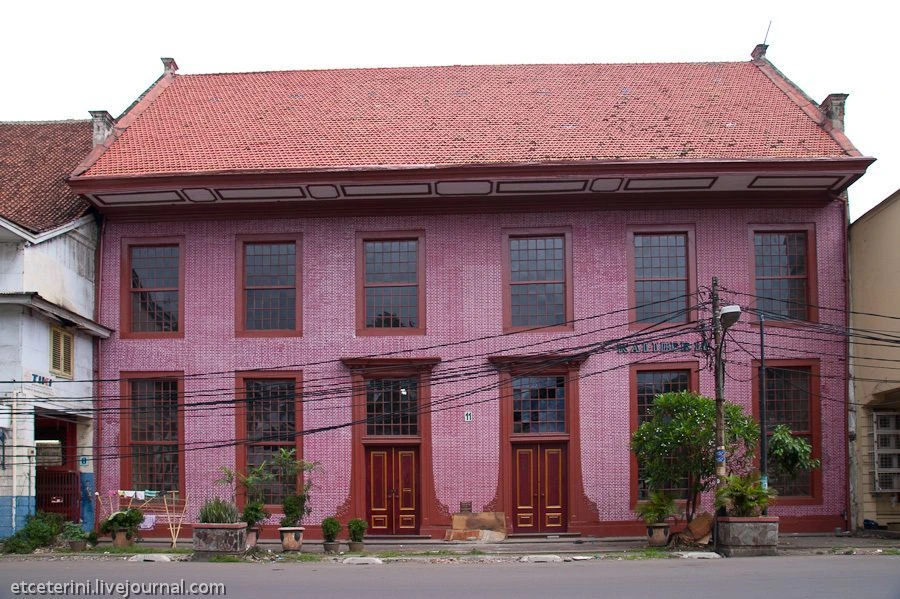
The southern part of the channel Kali Berat looks at modern Jakarta ...
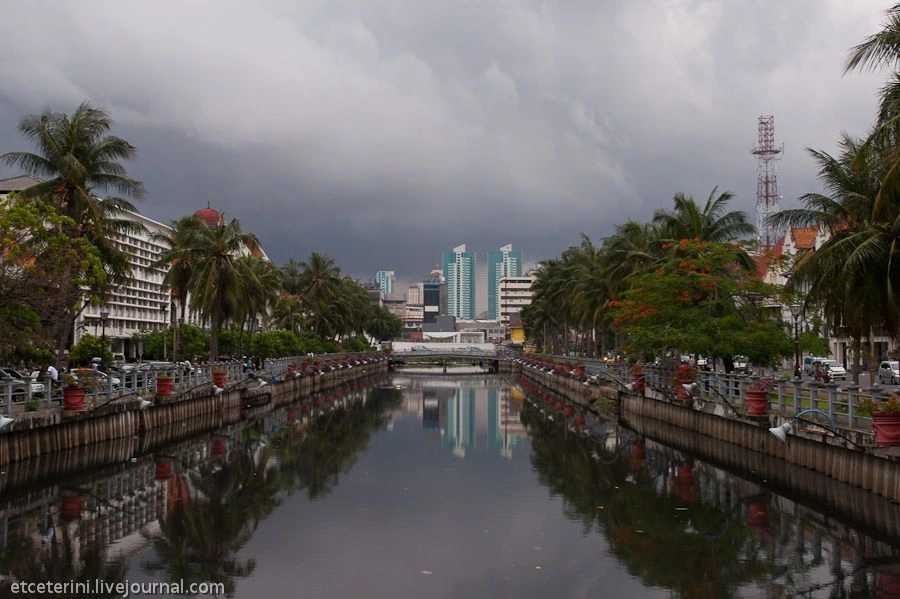
... And the north - goes to the port of Sunda Kelapa. In this part you can find the typical Dutch drawbridge (Chicken Market Bridge), the only remaining old bridge over the canal, built in the XVII century.
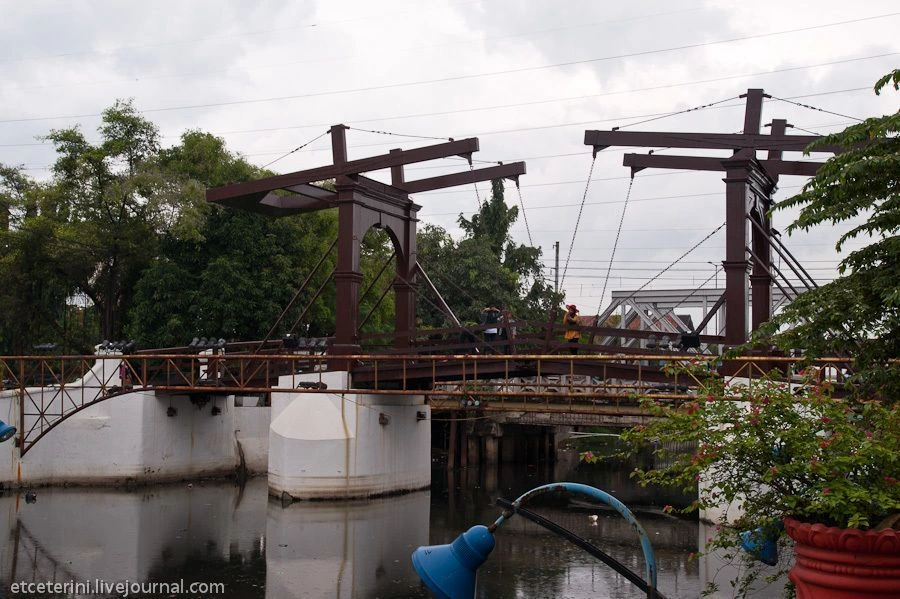
Near - modern hotel Batavia
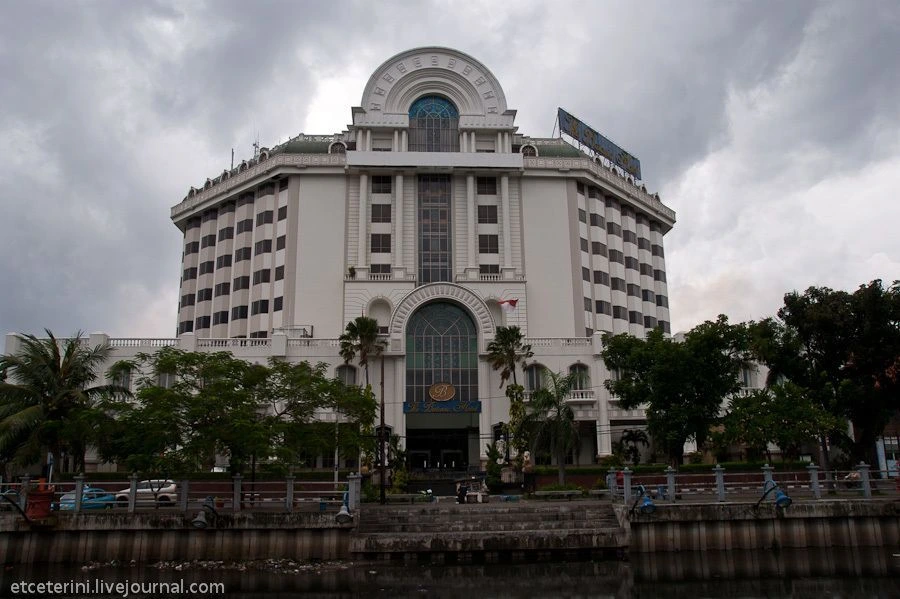
On the contrary - the terminal station of bus routes traveling to Kotu.
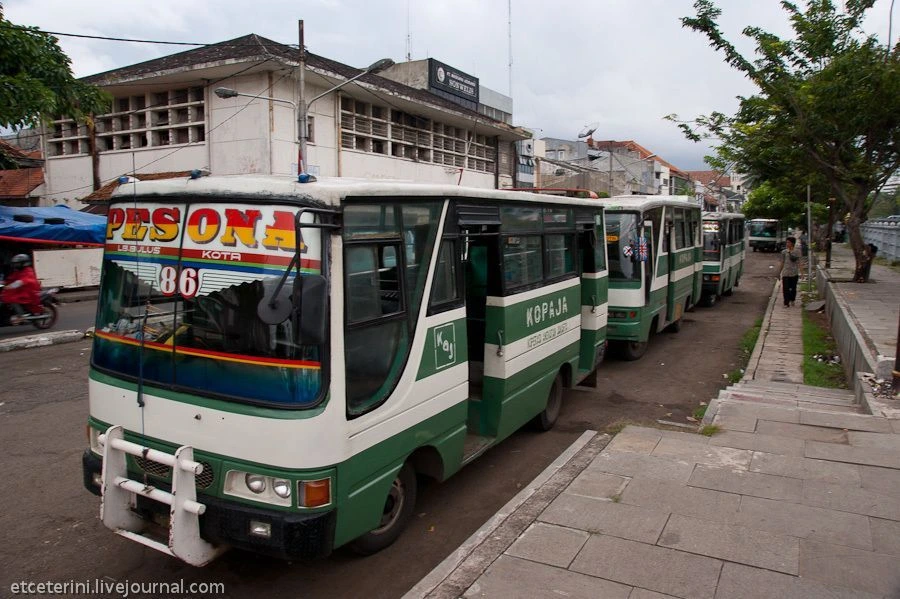
The main transport gate Cats - south area of Taman Fatahilla. In Jakarta, there are no underground or above-ground counterpart, as in many capitals of Southeast Asia. Its functions are partially fills the railway, which is part of the normal w / e network on the island of Java. In Jakarta, a dozen stations and terminals, between which it is possible to move the train. Kota station - one of them.
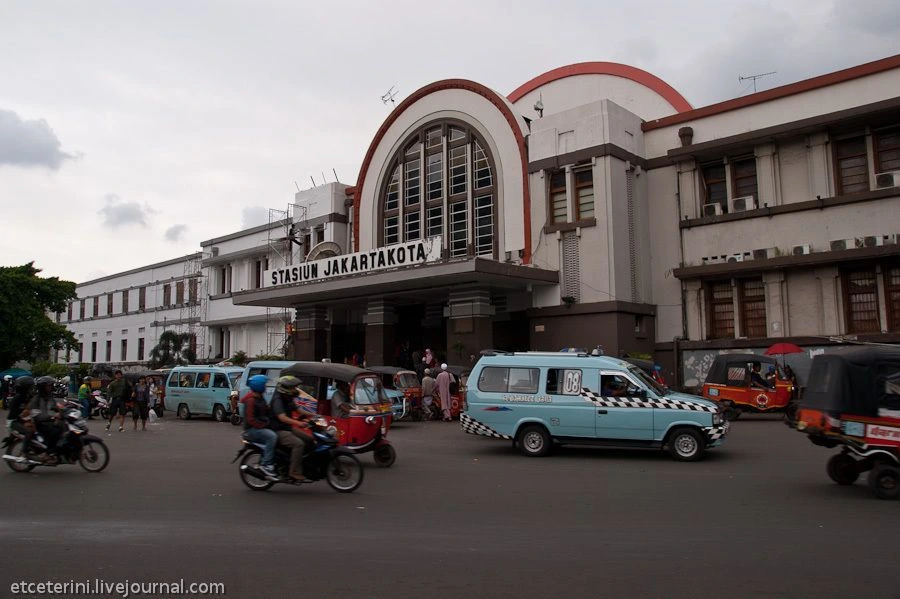
Close to the station - sump minibuses and tuk-fertilizer.
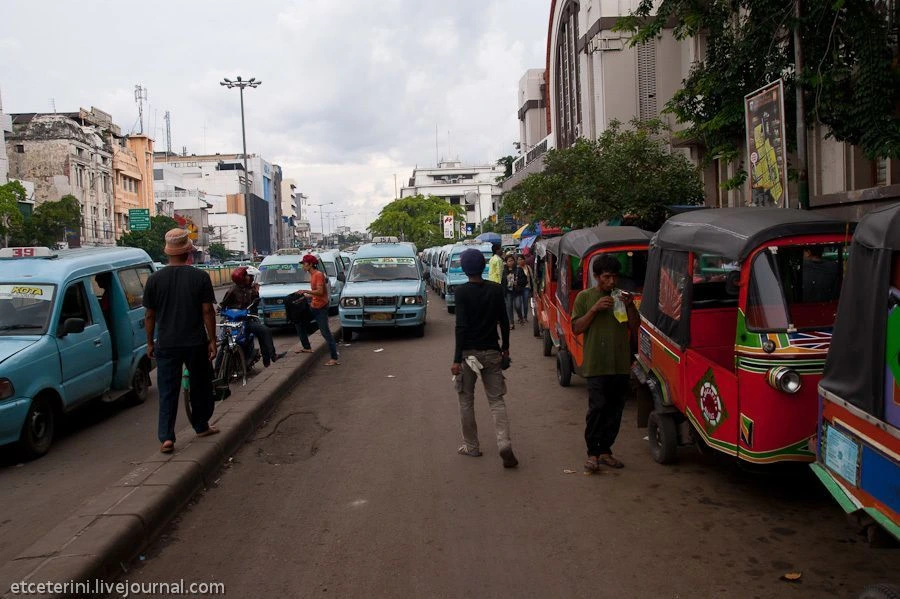
Typical Jakarta tuk-tuk - brother of Bangkok or Delhi auto rickshaws.
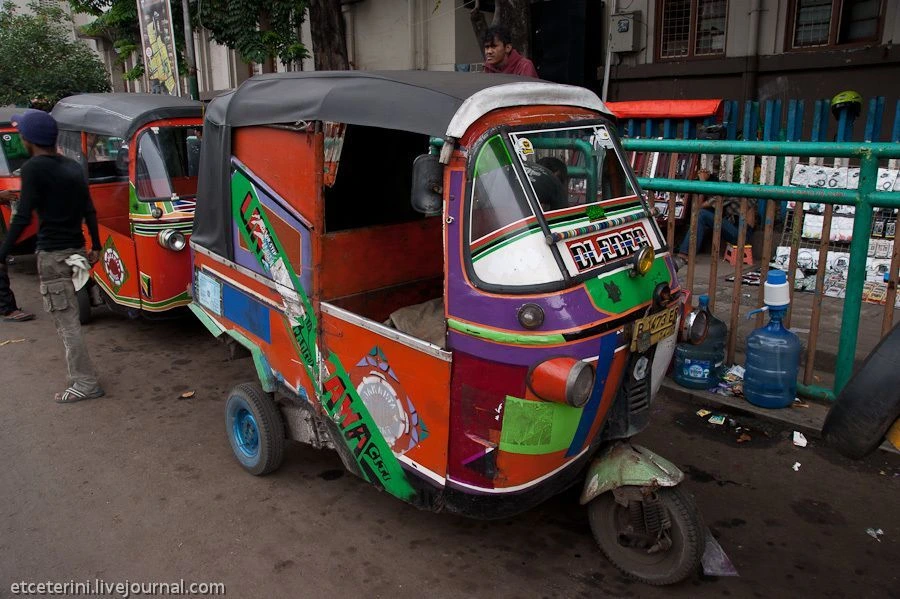
A very old copy of the cargo tuk-tuk.
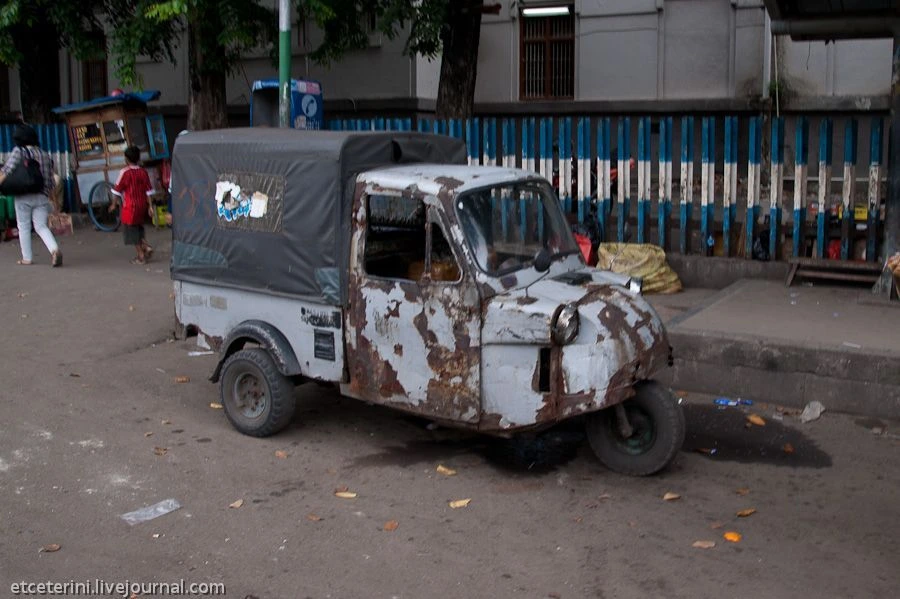
Opposite the station Kota - Bank Mandiri Museum, who took the former building of the Dutch trading company.
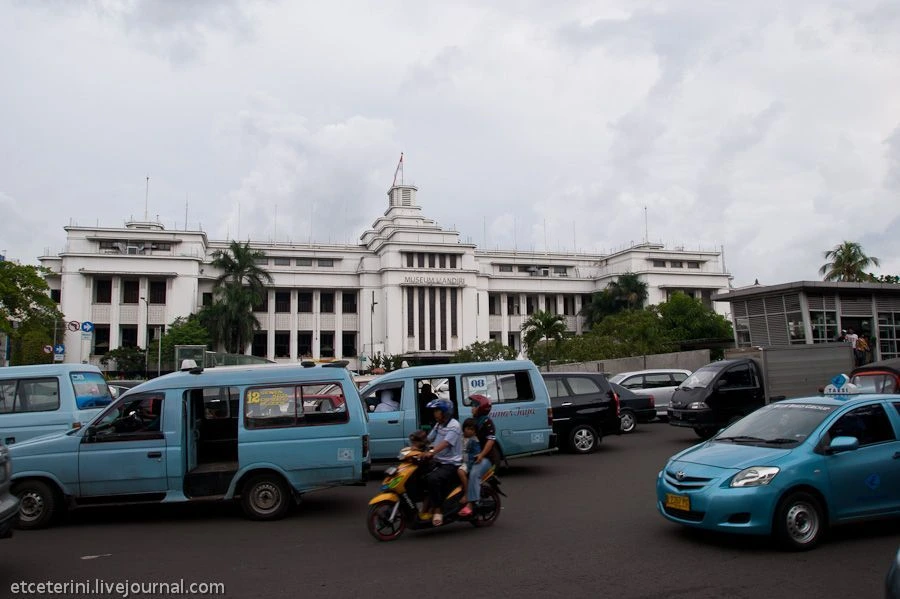
Next - one of the headquarters of the National Bank of Indonesia.
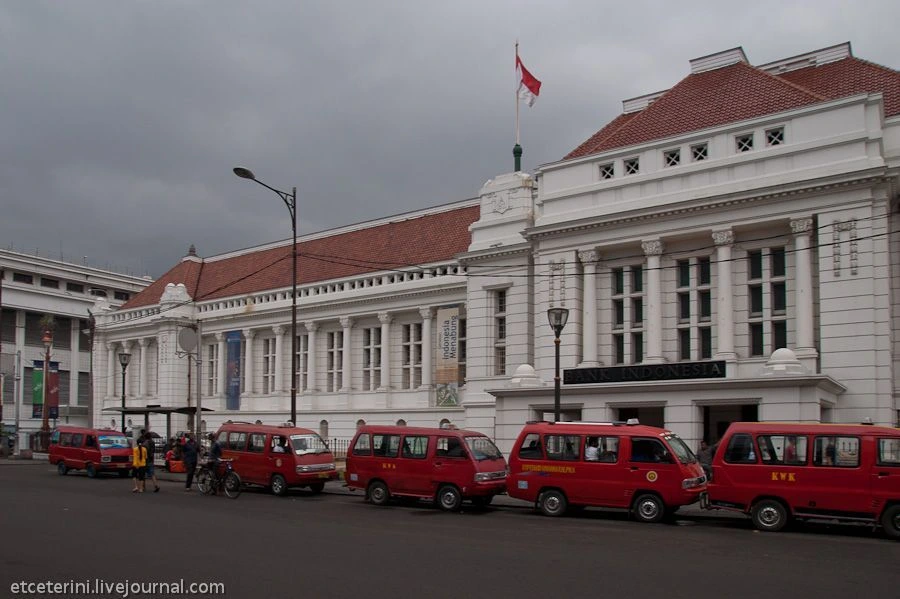
We have already left the territory that surrounds the walls of Batavia, but neighboring districts were also part of it. Along the street Asemka Go to last for today historical monument - Zion Church Geredzha. If in the area of Taman Kota Fatahilla looks more or less respectable, there appears in Jakarta unvarnished form. Residential houses, though tiled, but more like a slum, and the channels look more like gutters, they function, however, and perform.
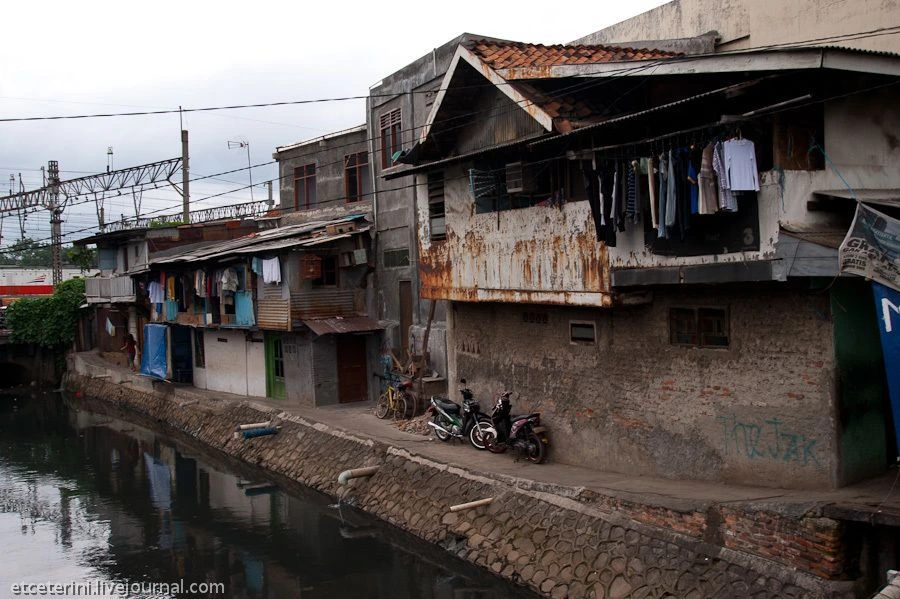
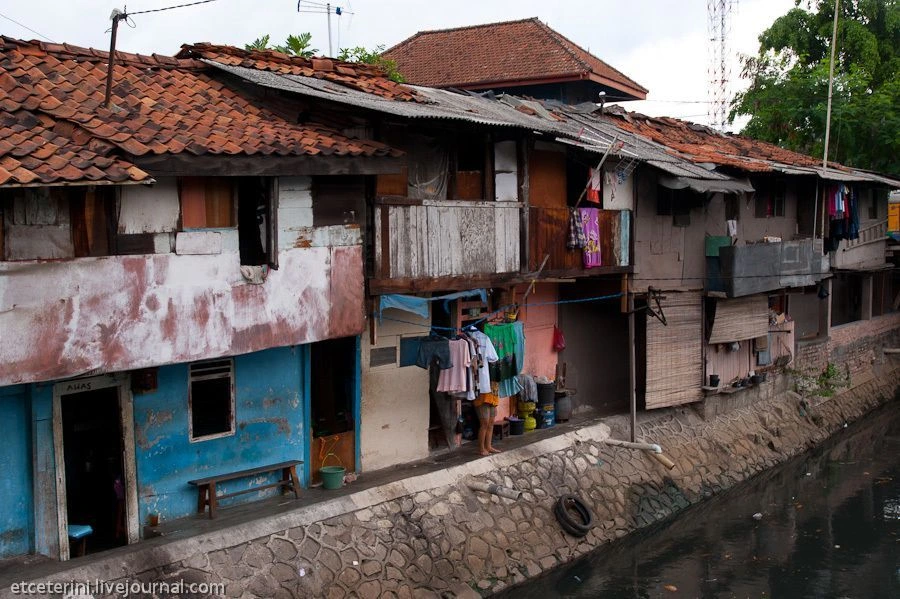
But here is the church Geredzha Zion, or the Portuguese Church - the oldest church in Jakarta. Built it in 1695 so-called "black Portuguese" - residents of the Portuguese colonies in India and Malaya, captured during the Dutch military campaigns and brought to Batavia as slaves.
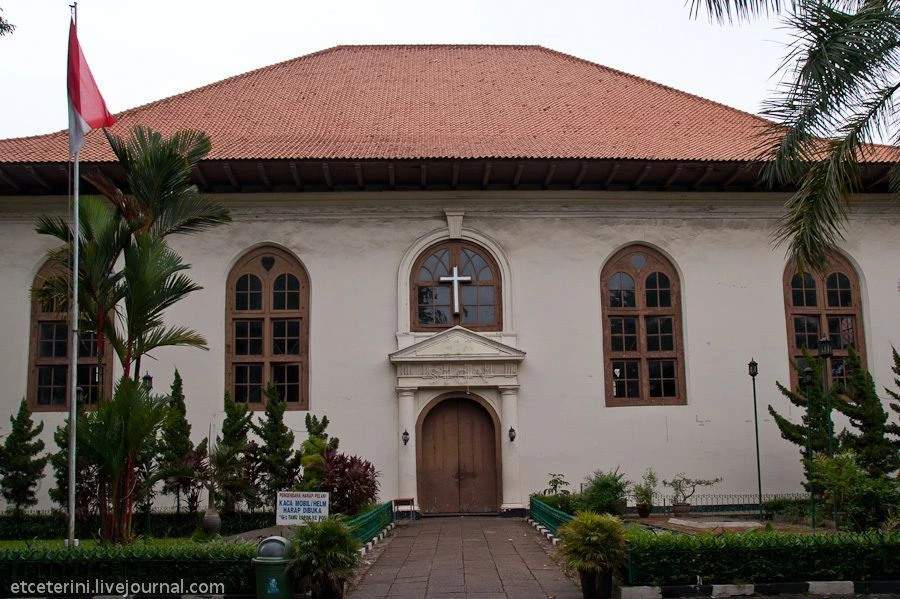
Portuguese church altar.
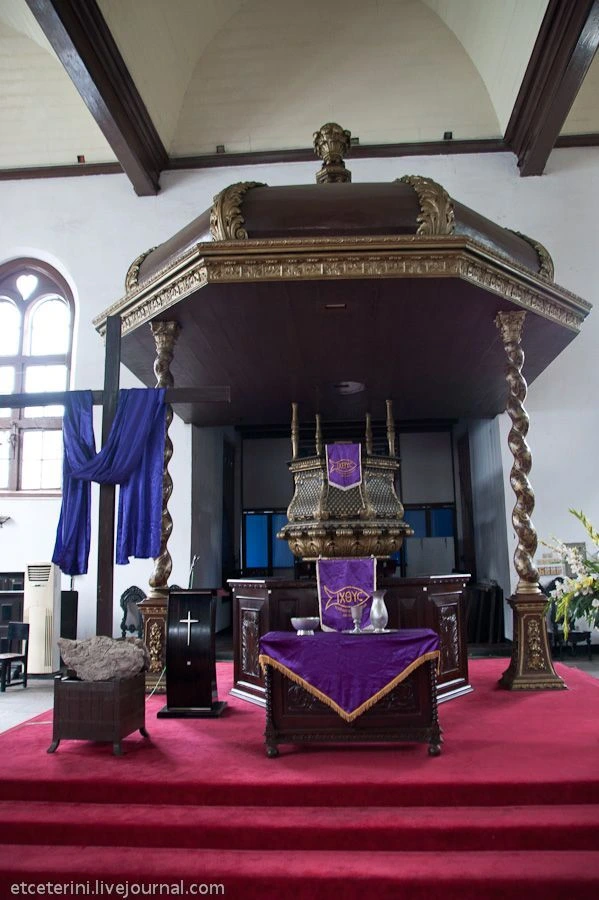
In the churchyard - numerous ancient tombstones.
